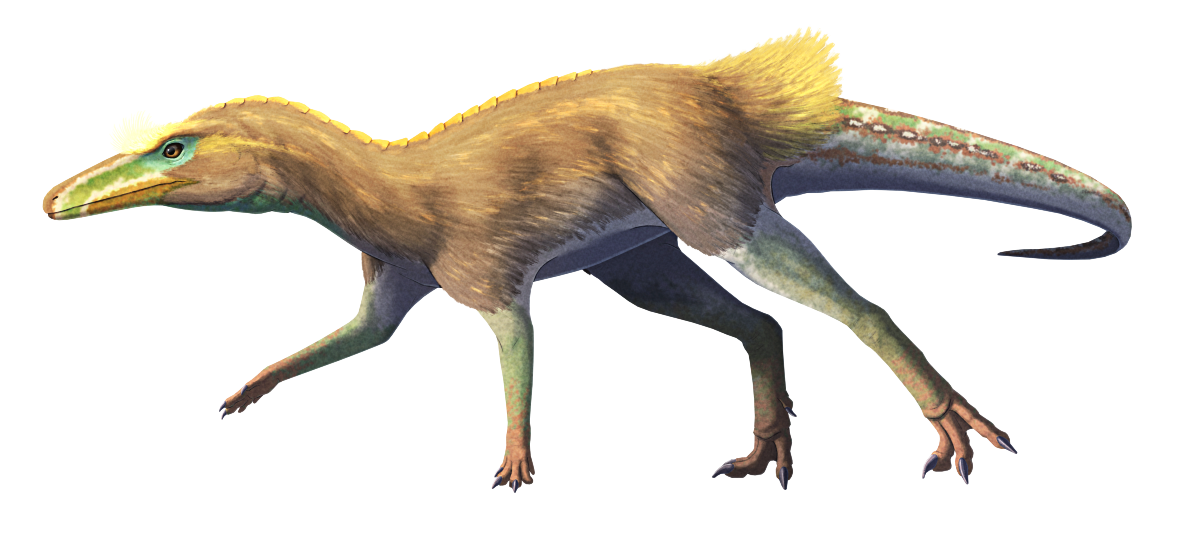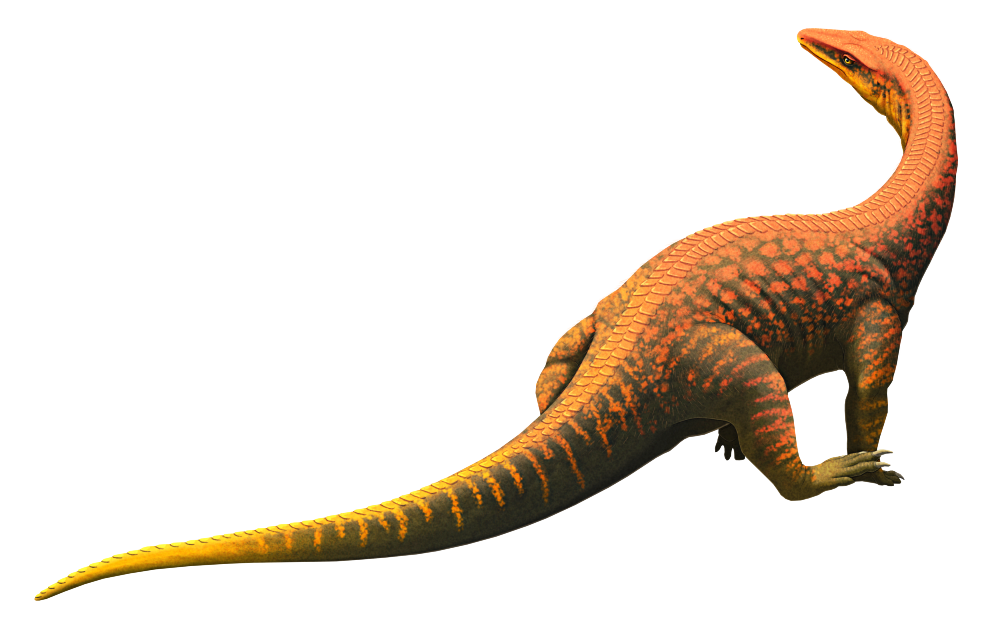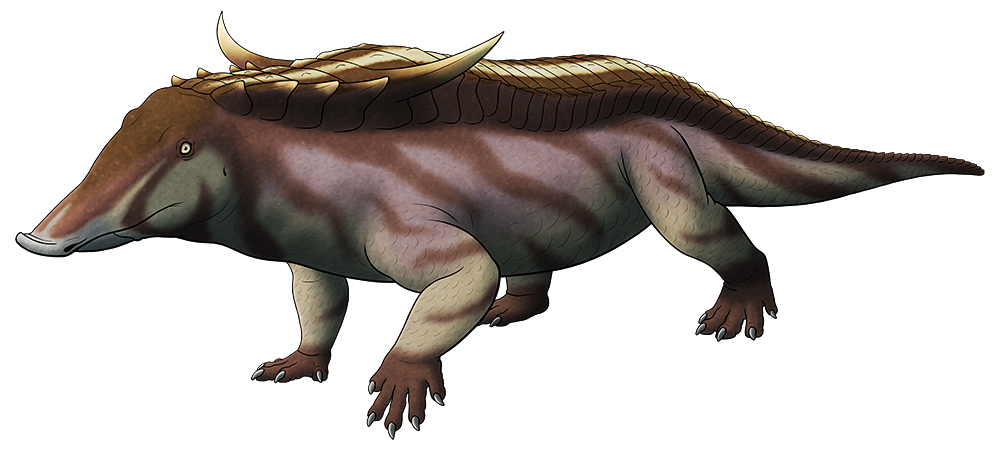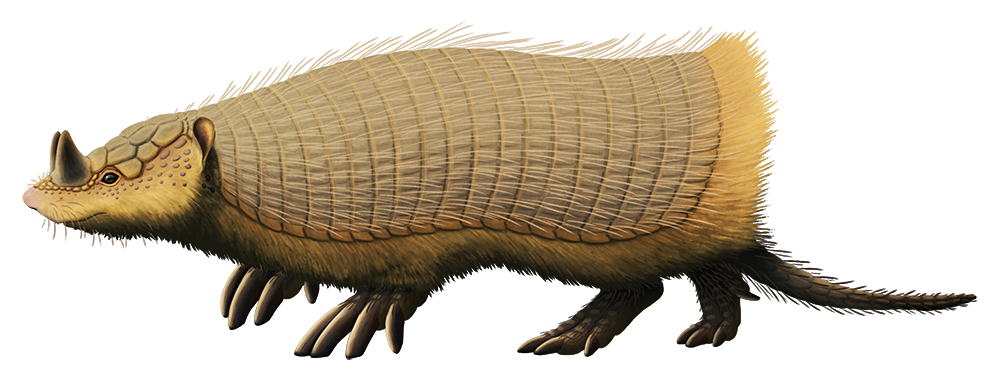Last week I mentioned the one oddball dinosauriform that had crocodilian-like osteoderm armor, so let’s take a look at that one too.
Lewisuchus admixtus lived in what is now northwest Argentina during the late Triassic, around 236-234 million years ago. About 1m long (3’3″), it was an early member of the silesaurids – a group of dinosauriforms that weren’t quite dinosaurs themselves, but were very closely related to the earliest true dinosaurs.
(They’ve also been proposed as instead being early ornithisichians, but we’re not getting into that today.)
Much like its later silesaurid relatives Lewisuchus had a long neck and slender limbs, and was probably mainly quadrupedal, possibly with the ability to briefly run bipedally to escape from threats. Its serrated teeth suggest it was carnivorous, likely feeding on both smaller vertebrates and the abundant insects found in the same fossil beds.
Uniquely for an early dinosauriform it also had a single row of bony osteoderms running along its spine. Although it lived at close to the same time as the similarly-armored Mambachiton their last common ancestor was at least 10 million years earlier, and no other early dinosaur precursors with osteoderms are currently known – so this was probably a case of Lewisuchus independently re-evolving the same sort of feature.






